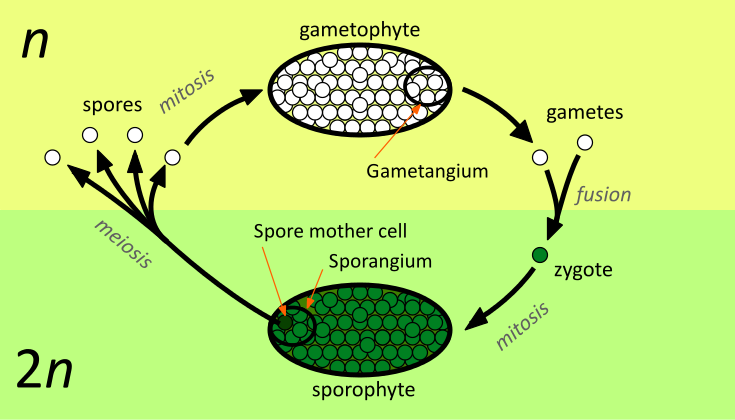 The fact that lycophytes take around twenty years to reproduce intrigued Janet when she watched the "Rise of the Wolf Plants" video. For such simple plants, lycophytes have a complex alternation of generation, which means that they have both asexual (the sporophyte) and sexual plants form (the gametophyte). This is shown in the diagram. To understand its reproduction better, view the slideshow below.
The fact that lycophytes take around twenty years to reproduce intrigued Janet when she watched the "Rise of the Wolf Plants" video. For such simple plants, lycophytes have a complex alternation of generation, which means that they have both asexual (the sporophyte) and sexual plants form (the gametophyte). This is shown in the diagram. To understand its reproduction better, view the slideshow below.
SporophyteThe sporophyte,"spore-bearing plant," is the diploid (2n) form of lycophytes. They have the full set of DNA, the genetic material that contains characteristics passed on from one generation to the next. SporangiumThe sporangium protects the developing mother spore cells, which give rise to male and female spores. SporesSpores arise when mother spore cells undergo meiosis, producing haploid (n) cells, which have a half set of DNA. Some haploid cells are male and the other haploid cells are female. GametophyteThe gametophyte is formed when haploid cells multiply by mitosis, which makes exact copies of the haploid cell. The gametophyte develops underground, so it does not need to photosynthesize. With the help of fungi, the gametophyte can gather nutrients for up to fifteen years. GametangiumThe gametangium protects the mature gametes (sperm and egg cells). In wet conditions, the sperm swims to fuse with(fertilize) the egg and azygote forms. Through mitotic division, the zygote grows into a sporophyte. |